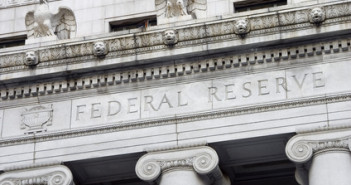The FOMC is not expected to make any significant policy changes. While Bernanke is certainly unimpressed from the situation of the economy, he did acknowledge that employment is improving, and the scenario of QE3 has little chances.
What can the Fed do? Here are 4 scenarios and the potential reaction for the US dollar.
First, let’s discuss the little chances of QE3. Employment is part of the Fed’s mandate and it has caused great worries. The fresh jobs report was great, once again. It included a gain of 227K jobs in February, and an additional 61K jobs from revisions of previous data.
Good jobs report also in the details
In addition, it included a drop in the “real unemployment rate” U-6, both in the seasonally adjusted number and the non-adjusted number, answering the claim that good weather had a strong impact on the figures. The participation rate in the workforce also rose.
Perhaps most importantly in the context of the Fed decision, the employment to population ratio also rose. This is a figure that was of concern to Bernanke.
Looking at the Fed’s second mandate, inflation, the picture also points to no QE3. Oil prices are quite high already and are high on the political agenda. So, another round of QE at this time will like be counterproductive: it curbs spending and can heighten unemployment.
4 Scenarios
- No policy change: The chances are very high. Given all the reasons for no QE3 and the decision made last month to extend the low rate pledge to 2014, there are good chances that no policy change will be seen now. This will be a bit positive for the dollar, as there are a few market participants expecting QE3.
- QE3-Lite: This is an option that was discussed recently. The idea is to buy bonds but keep the balance sheet unchanged by draining money out of the markets. This is exactly what the ECB does with its SMP. Chances aren’t so high. If so, it will be slightly dollar negative, as the draining process is not always 100% successful, and it’s still a form of QE.
- Extension of Operation Twist: The Fed is selling bonds on the short side of the bond curve and buying ones on the long one. This policy, announced in September 2011, is meant to encourage long term lending. The $400 billion operation expires in June, and could be extended now. The chances are low. The result will likely be a stronger dollar, as it lowers the chances for QE3 in the near future.
- QE3: As aforementioned, the chances are low. The only justification is the US political calendar – the Fed might want to act now, assuming the economy will deteriorate somewhere in H2. It will not want to act in the middle of the election season. Such a strong move on commodity prices and stocks would be seen by some as an intervention in the process. If this happens, the dollar will fall sharply.
Needless to say, no change is expected in the interest rate.
It’s important to note that the markets’ reactions to Fed decisions are often delayed. The event occurs on Tuesday at 18:15 GMT, and the markets may digest it in full only during the following European session on Wednesday. The initial reaction can sometimes be wrong.
Further reading: NFP Reaction in EUR/USD and Similarity to Dec ’09 – The result was very strong back then.
